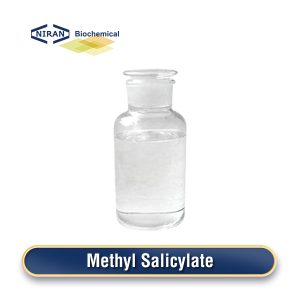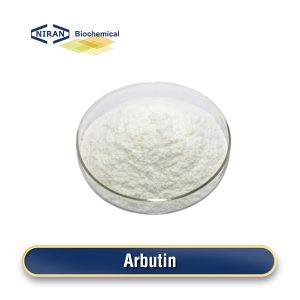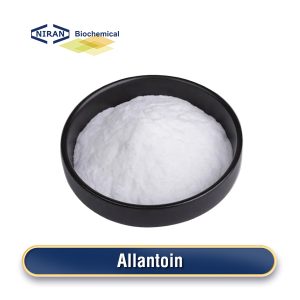Cetylstearyl Alcohol
- CAS Number: 67762-27-0 for the mixture
- Chemical Formula: A mixture of C16H34O (Cetyl Alcohol) and C18H38O (Stearyl Alcohol)
- MOQ: 1000KG
- Shelf Life: 2 years
- Forms: Solid, waxy flakes or pellets
- Synonyms: Cetearyl Alcohol, Cetostearyl Alcohol, Stearyl Alcohol-Cetyl Alcohol Mix
Product Description
What Is Cetylstearyl Alcohol?
Usually obtained from natural sources such as palm oil, coconut oil, or animal fats, cetylstearyl alcohol (Cetearyl Alcohol) is a blend of cetyl alcohol (C16H34O) and stearyl alcohol (C18H38O). As an emulsifier, thickener, and stabilizer, it is commonly used in pharmaceuticals, cosmetics, and personal hygiene products. It appears as a white, waxy solid.
Preparation: Cetylstearyl Alcohol is usually produced by blending Cetyl Alcohol and Stearyl Alcohol in varying proportions, with a common ratio of 1:1. These alcohols are derived from natural fatty acids through hydrogenation. The mixture is then purified, crystallized, and processed into flakes or pellets for easy incorporation into formulations. It can also be produced by esterifying fatty acids and reducing the resulting esters to the corresponding alcohols.
Related Parameters:
| Items | Standards |
| Appearance 30℃ | White crystal |
| Colour Hazen | 10max |
| Moisture % | 0.15max |
| Acid Value mgKOH/g | 0.2max |
| Saponification Value mgKOH/g | 0.8max |
| Iodine Value gl2/100g | 0.8max |
| Melting point ℃ | 49-52 |
| Hydroxyl Value mgKOH/g | 215-230 |
| Total Alcohol % | 99.0min |
| Hydrocarbon alkyl % | 1.0max |
| Main components % | 98.5min |
| ≤C14 Alcohol | 1.0max |
| C16 Alcohol | 65.0-77.0 |
| C18 Alcohol | 23.0-35.0 |
| C20 Alcohol | 1.0max |
Recommended Dosage of Cetylstearyl Alcohol:
| Applications | Dosage |
| Cosmetics and Personal Care | 1%-3% |
| Hair Care Products | 1%-2% |
| Pharmaceuticals | 2%-5% |
| Emulsions (Cosmetic/Pharma) | 2%-4% |
| Industrial Applications | 0.5%-1.5% |
| Surfactants | 1%-2% |
| Plasticizers | 0.5%-1% |
| Food Industry (limited use) | <0.1% |
| Agriculture | 0.5%-1.5% |
| Textile Industry | 0.5%-1% |
Cetylstearyl Alcohol Has Wide Range of Uses:
Personal Care and CosmeticsServes as a thickener, stabilizer, and emulsifier in skincare products such as sunscreen, lotions, and creams. It enhances texture, helps prevent the separation of ingredients, and improves the sensory feel of the skin.
Hair Care
Conditions, smooths, and detangles hair, reducing frizz and improving manageability in conditioners, shampoos, and hair masks.
Pharmaceuticals
Stabilizes and thickens topical ointments, creams, and emulsions, enhancing spreadability and consistency.
Industrial Applications
Improves viscosity and performance in lubricants, coatings, and greases, providing lubrication and stability.
Surfactants
Helps create stable emulsions and foams, providing cleansing properties in detergents and
cleaning agents.
Plasticizers
Enhances the flexibility and workability of plastics.
Food Industry (Limited Use)
Stabilizes emulsions in processed foods, though its use is limited.
Agriculture
Serves as a surfactant or emulsifier in agricultural formulations, such as pesticides and herbicides, facilitating enhanced spreadability and uniform distribution.
Textile Industry
Provides a smooth, soft texture to fabrics and enhances tactile properties in fabric softeners and textile finishing.
User Asked Question:
Q: How does Cetylstearyl Alcohol differ from other alcohols, such as Cetyl Alcohol or Stearyl Alcohol?
A: The primary difference between Cetylstearyl Alcohol and other alcohols like Cetyl Alcohol or Stearyl Alcohol lies in their composition. Cetylstearyl Alcohol is a blend of Cetyl Alcohol (C16) and Stearyl Alcohol (C18), whereas Cetyl Alcohol is a single fatty alcohol (C16) and Stearyl Alcohol is a different one (C18). This combination of two alcohols provides enhanced stability and a smoother texture, making it especially useful in formulations where both thickening and emulsifying properties are needed.




